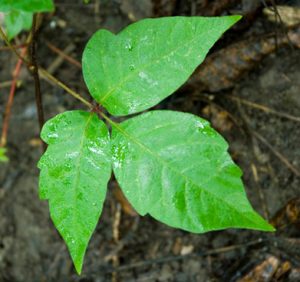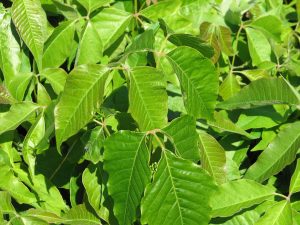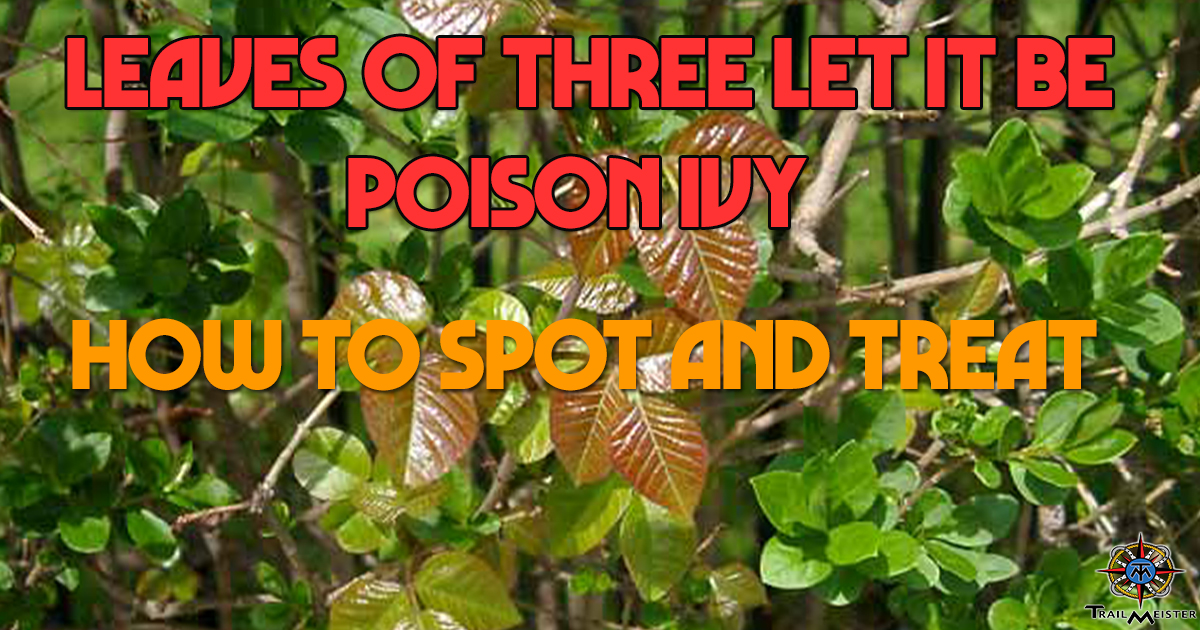 Leaves of three – Let it be – Identify Poison Ivy
Leaves of three – Let it be – Identify Poison Ivy
Poison Ivy: Spotting the threat and treating the rash.
Summer and fall is prime horse and mule camping season. But beware what you may encounter while riding or when gathering firewood for the campfire.
Here in the Pacific Northwest most of my local trails are dusty, dry, and sparsely vegetated. Until fall arrives when they come to life in vibrant shades of red. One of these beautiful plants that keeps me on my toes is poison ivy, that infamous, itchy adversary with beautiful crimson leaves.
Fortunately, Poison ivy is easy to spot–especially in fall. Here are some tips to identify poison ivy all year around. I learned the hard so you won’t have too!
Poison ivy is one of North America’s most common type of poisonous plant. Exposure to the plant’s urushiol containing oils is what causes the nasty allergic reactions that give the outdoors a bad name.
Poison ivy is abundant in the lower 48. Riders and campers across north America will encounter members of the T. Radicans family. The Centers for Disease Control (CDC) reports that western and eastern poison ivy can be found in all states (except California, where poison oak is more common).
These hearty noxious plants thrive in almost any environment, and can be found in woods, wetlands, alpine deserts, and urban environments like backyards. If you’re riding off trail, be wary of stream beds where poison ivy thrives. Your best option to protect yourself is to wear long pants, long socks, and sleeved shirts.

By D. Gordon E. Robertson – Own work, CC BY-SA 3.0, https://commons.wikimedia.org/w/index.php?curid=6958915
“Leaves of three, let it be.” This is generally good advice, although in some rare cases leaves of five have been reported. Here’s a few ways to identify poison ivy.
- Eastern poison ivy is usually hairy, with shiny leaves budding from a single stem that grows as a rope-like vine through aerial roots.
- Western poison ivy is typically a low shrub with three leaves. The western variation doesn’t form a climbing vine like its eastern cousin.
- Both species have white to green-yellow, or amber colored bunched berries that are easy to identify in fall.
Quick Fact: Poison ivy is very sensitive to carbon dioxide levels. Higher carbon dioxide levels increase the rate of plant growth, and causes them to produce more urushiol, which causes stronger reactions in humans. Studies have shown that poison ivy’s growth and potency has already doubled since the 1960s, and it could even higher as carbon dioxide levels increase due to climate change.
What to do: People react to the plant’s toxic oil, urushiol, 12–72 hours after exposure. The oils can remain active for several years, so handling dead leaves or vines can also cause a reaction. In addition, oil transferred from the plant to other objects (such as pet fur) can cause the rash if it encounters your skin. If you think your clothes were in contact with poison ivy, wrap the exposed clothing in a plastic bag and wash them in detergent and hot water when returning home. For similar reasons, wash your dog if it was exposed.
Quick Fact: People who are sensitive to urushiol can also experience a similar rash from mangoes. Mangoes are in the same family as poison ivy; and the sap of the mango tree and skin of mangoes has a chemical compound similar to the urushiol found in poison ivy.
Treatment: Even small amounts of contact with poison ivy will cause about 80–90% of adults to have an allergic reaction. Typical responses include itchy rashes, bumps or blisters, and swelling. Although extremely annoying, poison ivy rashes will pass after a few weeks. To prevent this Immediately after contact wash your skin with rubbing alcohol or a detergent (like dishwashing soap). The goal is to remove the oils so use plenty of water and rinse frequently. Apply a wet compress, calamine lotion, or hydrocortisone cream to reduce the itching and blistering. Antihistamines, such as Benadryl, may help relieve the itching.
If you are suffering from a severe allergic reaction or you had a severe reaction in the past be safe and call 911.
Finally, never burn poison ivy. This can release the urushiol particles into air which if inhaled could elicit a potentially fatal inflammatory response, closing off the airway.
There you go how to identify poison ivy and treat the rash if you miss it!
For more information on trail riding, horse camping and more visit www.TrailMeister.com. Enjoy the Ride!!!
For more trail riding tips visit our main tips page at https://www.trailmeister.com/category/tips/


